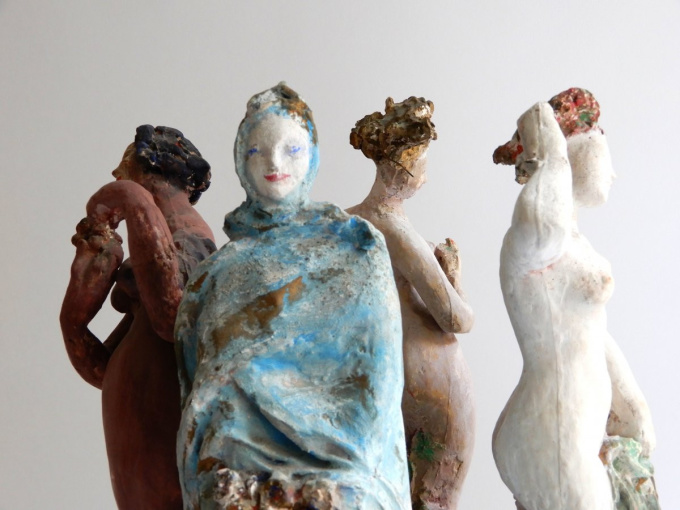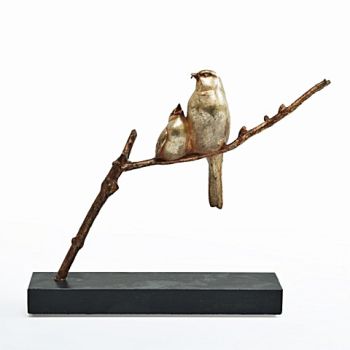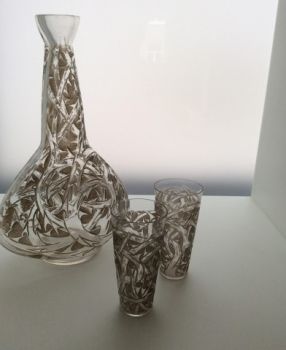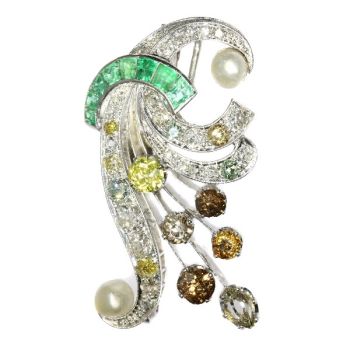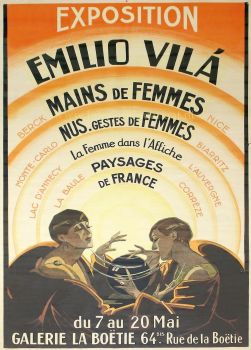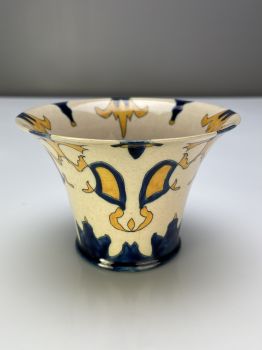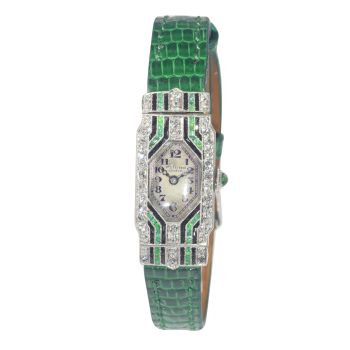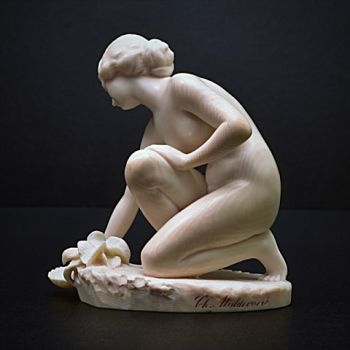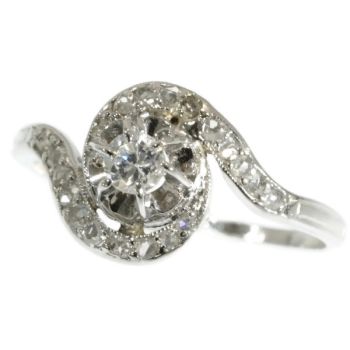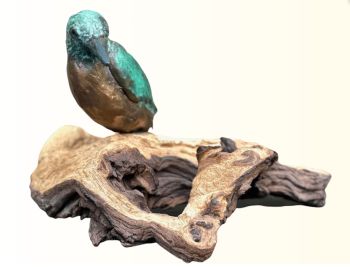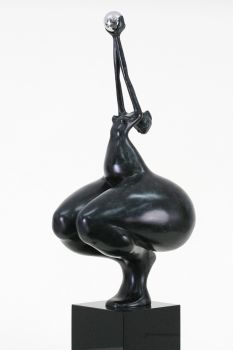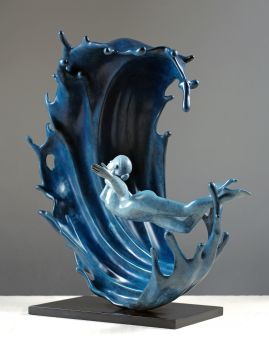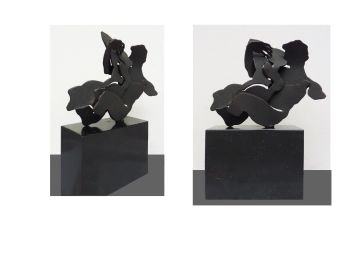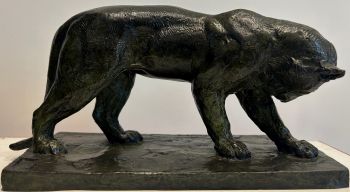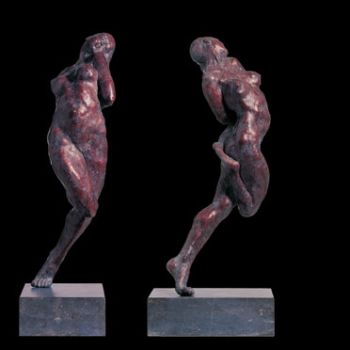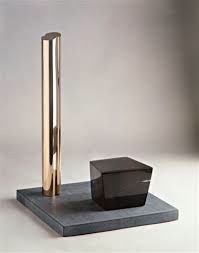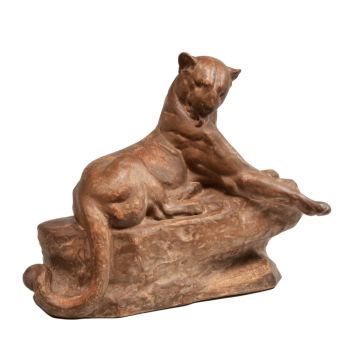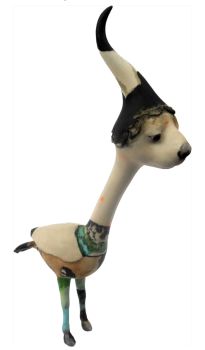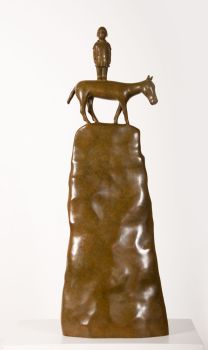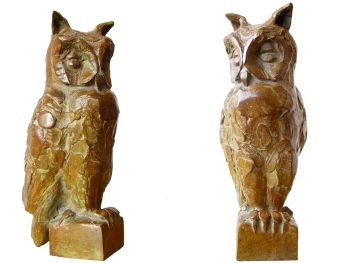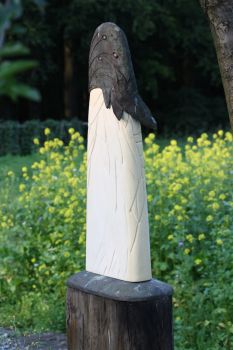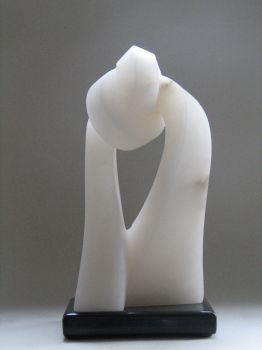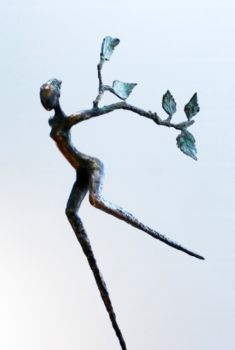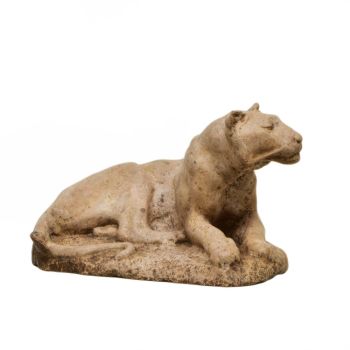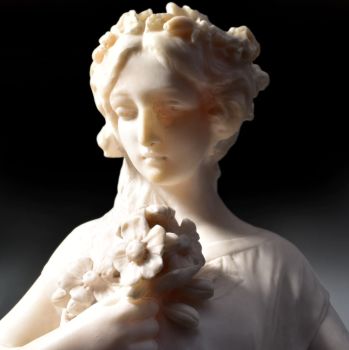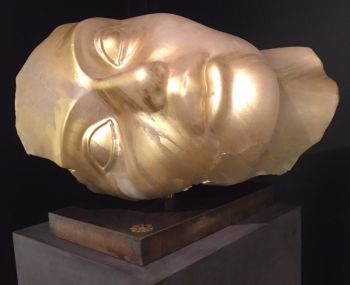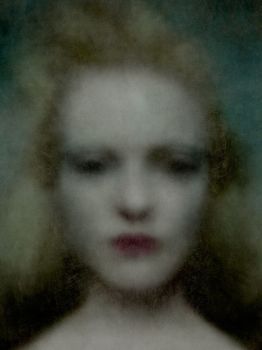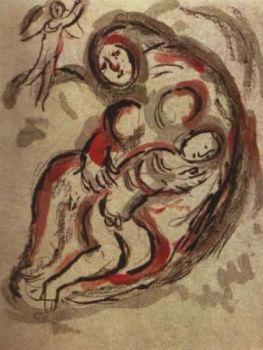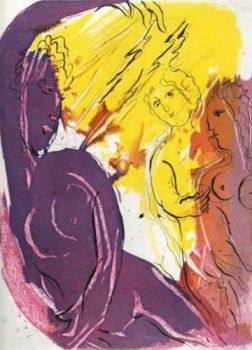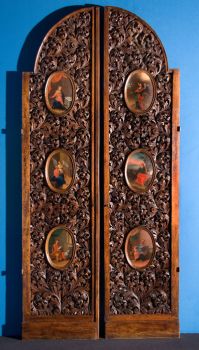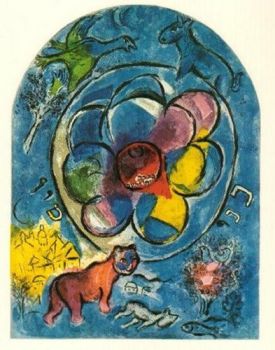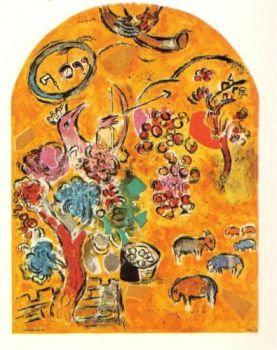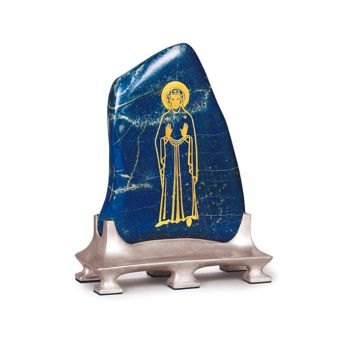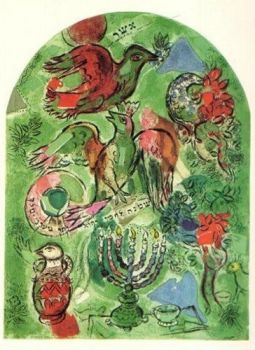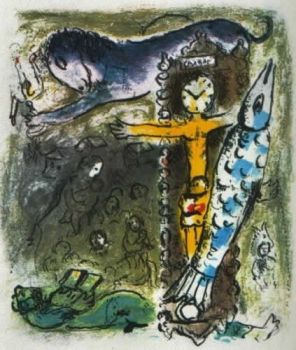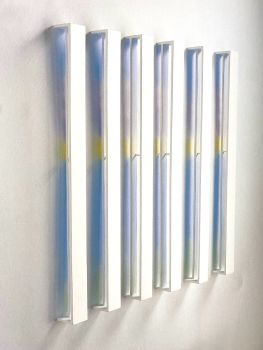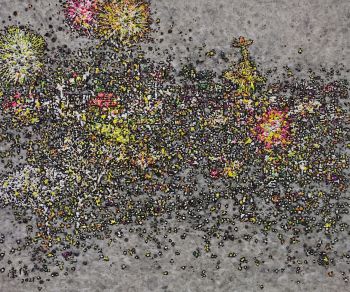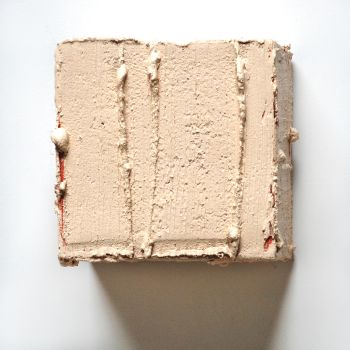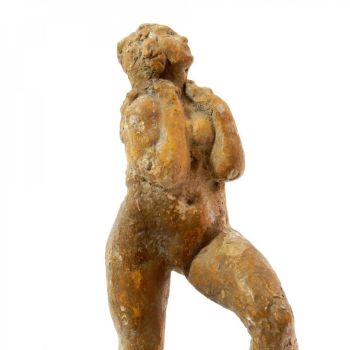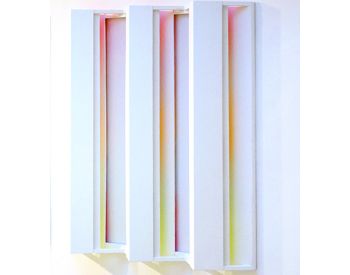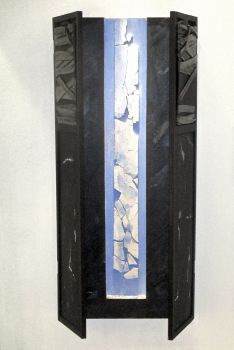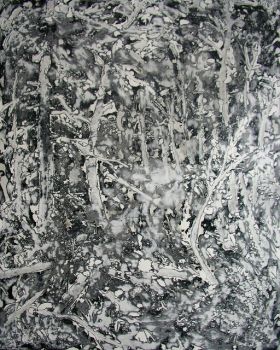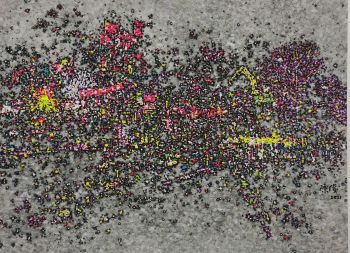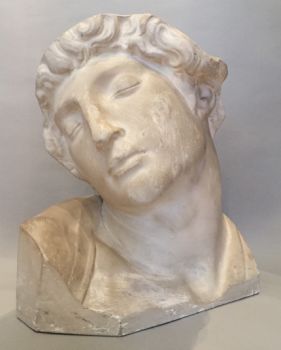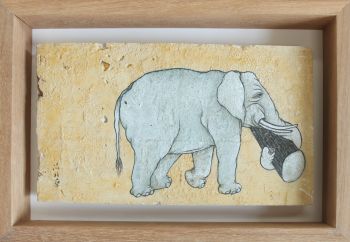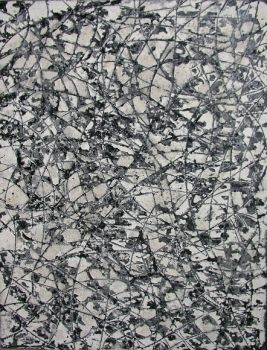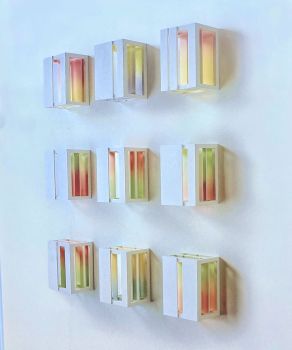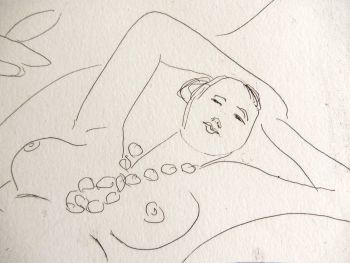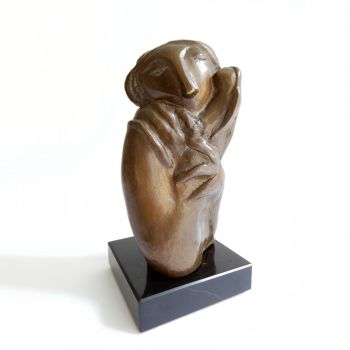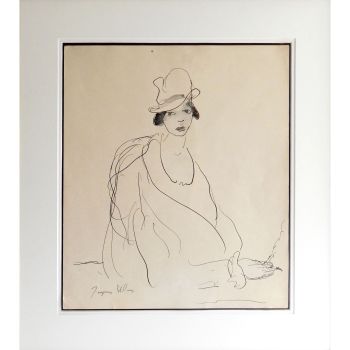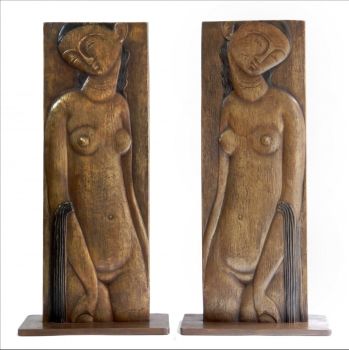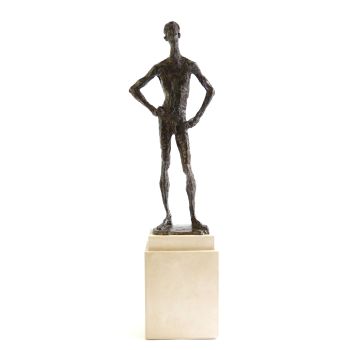'Les quatre saisons' 1953
Alfred Janniot
Gips
Prijs op aanvraag
Dille Art
- Over kunstwerk
Plaster sculpture with a polychrome patina, where the four seasons are represented as four goddesses. Janniot also wanted to try out polychromy on plaster with this plaster. He painted it with tempera. The goddesses stand on a gold-colored cross-shaped pedestal where the names of the seasons are also mentioned. The intention was to create a circle, a round dance, just like the seasons themselves. Four goddesses symbolize the four seasons: Le Printemps: Flora, goddess of flowers. It stands for the rebirth of vegetation. She is half naked and is holding a cloth (drapery), the other hand reaches for her hair. In the bronze version, she does not. l'Ete: Céres, also known as Demeter, is the goddess of the harvest. She is naked with a golden (blonde) haircut. Janniot's wife Cécile Garny was a model for this, she was his muse and a great source of inspiration for Janniot. She was also a model for the Baigneuse (National Library) and for the famous sculpture "Le torse de Mme Janniot" which he exhibited at the Venice Biennale. l'Automne: Pomona, goddess of wine and vineyards. She is naked, colored purple, she stands with a sagging hip. In one hand she holds a bunch of grapes, the other hand points to it. l'Hiver: Winter represents the art in this sculpture, actually there are nine muses of art and science, Janniot has chosen to display her completely covered, even her head is covered. Her posture suggests nighttime rest or sleep. The head upright. She has a serene expression. She holds flowers in her hands, in anticipation of spring. It is depicted in cool colours, the blue and white representing snow and ice. This plaster was a study for a bronze, commissioned by l' École Normale Supérieur in Cachan in 1953. It is a post-bachelor training and research institute, on the outskirts of Paris. The bronze version is still there, but Janniot had made minor changes, such as changes in hairstyle or posture. A terracotta version (not colored) of this plaster study is also known. This plaster is unique and very exceptional. The colors enhance the cheerful and dreamy appearance. Dimensions: base Length: 30cm (11.81") Width: 30cm (11.81") Height: 43cm (16.93")
- Over kunstenaar
Alfred Auguste Janniot (1889-1969), geboren in Montmartre, Parijs. Hij studeerde aan de École Nationale des Beaux-Arts in Paris en was leerling van Injalbert. Na zijn militaire diensttijd werd hij gemobiliseerd tijdens WOI. Daarna ging hij direct weer aan het werk als beeldhouwer. Hij won in 1919 Prix de Rome en vertrok naar de Villa de Medici in Rome, daar maakte hij zijn meesterwerk 'Hommage à Jean Goujon'. Het werk was in 1925 op de Wereldtentoonstelling Arts Décoratifs te bewonderen in het paviljoen van goede vriend en bewonderaar Emile Ruhlmann. Hij meerdere werken in commissie gemaakt voor Emile Ruhlmann.
Janniot was geïnspireerd door de Grieks-Romeinse mythologie en de bijbel. Hij ontwikkelde een neo klassieke stijl maar met een modernistische gestileerde interpretatie en had veel succes.
Hij werd ook sterk beïnvloedt door Antoine Bourdelle, die hem veel technieken in steen heeft geleerd.
Hij kreeg in 1928 de opdracht om de stenen reliëfs van de facade voor het Musée Coloniale te maken, destijds bedoeld voor de Koloniale Wereldtentoonstelling in 1931. Hij heeft daar 2 jaar aan gewerkt, samen met ingehuurde beeldhouwers die zijn ontwerpen hielpen maken. Tegenwoordig dient het gebouw als museum in Parijs en is het wereldberoemd door de prachtige indrukwekkende reliëfs van oceanen, schepen, jungle, met dieren als zebra's, olifanten en vele andere dieren.
Ook de gouden facade van 'Maison Francaise' in het Rockefeller Center, New York is van zijn hand evenals de beroemde entree van Palais Tokyo (1937). Hij heeft gedurende zijn werkzame leven veel architecturale en monumentale beeldhouwwerken gemaakt zoals fonteinen, monumenten en bas reliëfs, maar ook bas-reliëfs gemaakt voor de grote salon van de grote oceaanstomers als SS Ile-de-France (1927) en de SS Normandie (1935).
Hij trouwt in 1933 met zijn mooie jongere vrouw Cécile Garny, die altijd zijn muze blijft en vele malen door hem is vereeuwigd in steen of brons, of in gips, zoals bij deze uitzonderlijke gips het geval is.
Tijdens WOII werd zijn atelier totaal verwoest bij een bombardement, waardoor veel van zijn werk voorgoed verloren is gegaan.
In 1945 werd Janniot professor beeldhouwen aan de École des Beaux-Arts, naast zijn drukke carrière.
Bent u geïnteresseerd om dit kunstwerk te kopen?
Artwork details
Related artworks
Amalric Walter
Amalric Walter & Henri Bergé – Crabe plumier1920 - 1929
Prijs op aanvraagAntiques Emporium
1 - 4 / 24- 1 - 4 / 24
Onbekende Kunstenaar
Monumentale houten icoon: De heilige Nicolas van Mozaisk1600 - 1650
Prijs op aanvraagKunsthandel H.W.C. Dullaert Icons
Elisabeth Treskow
Afghaanse lapis lazuli ingelegd met goud op een zilveren voet1950 - 1960
Prijs op aanvraagJacob J. Roosjen SRI
1 - 4 / 24- 1 - 4 / 14
Onbekende Kunstenaar
Japanese art deco lacquervase with Scarab beetle motif1920 - 1950
Prijs op aanvraagDille Art
1 - 4 / 12


